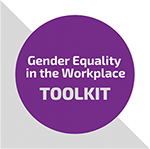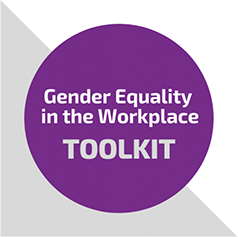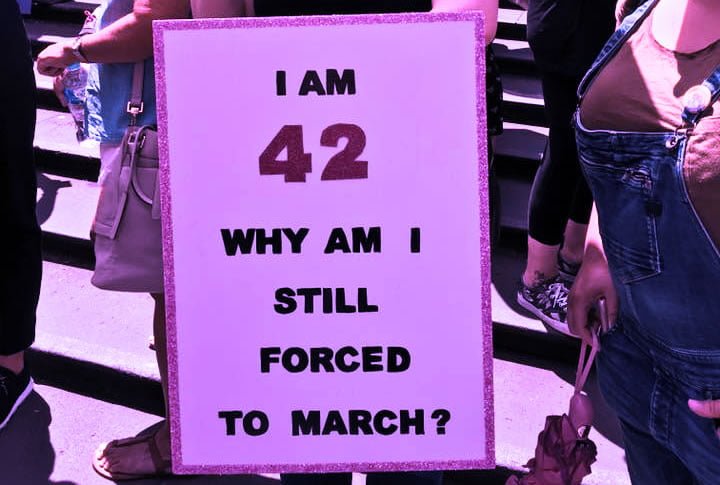Stage 3
Implementing the Change
What does a workplace at this stage look like?
A workplace at this stage has a leadership team and staff who are committed to the principles of gender equity and the prevention of violence against women, demonstrated by their internal training commitments and their public leadership commitment.
The workplace understands the significant role it can play in the prevention of violence against women, and has assessed its internal systems, policies and culture. A workplace at this stage is ready to plan and implement a long-term strategy, and short-term action plan, for gender equity and the prevention of violence against women.
A workplace at this stage has signed up as a partner to the Regional Strategy and is participating in the deliverables of this strategy, and internally, staff will have resources and feel accountable to take action.
What does a workplace at this stage want?
A workplace at this stage is looking for assistance and guidance to design a longer-term strategy, and short-term action plan. Practical guides and examples on how to design such a strategic planning document will be required. WHISE can provide assistance and resources, and direct partners to relevant resources from peak bodies including the Commission for Gender Equality in the Public Sector, OurWatch, ANROWS and VicHealth.
A workplace at this stage is interested in supporting their staff commitment to these principles, and is interested in encouraging staff to step into ‘champion’ roles, to take the lead with internal initiatives, and follow the example set by leadership team champions.
Workplaces at this stage will be interested in providing their staff with more sophisticated training, such as bystander training, and training in backlash and resistance, to empower staff and leadership to take on these champion roles.
Workplaces at this stage will be interested in making the most of opportunities for mentorship, and will be implementing and monitoring actions that will achieve progress in promoting gender equality or prevention of violence against women.
A workplace at this stage will be actively promoting the organisation’s commitment and progress towards achieving workplace gender equality through their internal and external communications.
Gender Equity and Prevention of Violence Strategies
A gender equity or prevention of violence against women strategy outlines your organisation's long-term approach to gender equity and the prevention of violence against women, and your action plan is your year-to-year outcomes, or deliverables, which drive the implementation of the strategy.
WHISE can provide support in the development and implementation of a strategy, and advise on appropriate action plan design.
All requests for this support should be directed to WHISE who can establish an appropriate pathway for your workplace.
WHISE's peak research and advocacy body OurWatch provide sample strategies that support gender equity, and address methods to prevent violence against women. Access the resources via OurWatch.
Standardised induction process
In 2017, the Municipal Association of Victoria (MAV) in partnership with five local governments, WHISE and the Southern Melbourne Primary Care Partnership (SMPCP) to design an E-learning tool, a comprehensive introduction to gender equity and the prevention of violence against women.
This module can be utilised in an induction process to ensure that every member of staff has a base level of understanding of gender equity and Prevention of Violence against Women Principles. The Module can be accessed via Family Violence and Gender Equality Learning Portal.
In 2018, Gender Equity Victoria released their own online module to support workers to learn more about playing a role in preventing violence against women.
Case Studies:
Implementing the E-Learning Module
Format
Case study for the Preventing Violence Together Toolkit
Purpose
To provide examples of services who have successfully implemented the e-learning module and outcomes
Audience
Partners of the Preventing Violence Together – GROWE Community of Practice, community health services and local government organisations planning on implementing the e-learning module
Caulfield Community Health Service (CCHS) implemented the gender equity e-learning module to strengthen the service’s prevention efforts, and to increase staff awareness and understanding of the drivers of family violence.
The aim of completing the gender equity e-learning module was to build both staff and organisational capacity. This followed on after CCHS’s completion of family violence training as part of the Strengthening Hospital’s Response to Family Violence (SHRFV). CCHS released the e-learning module to staff as part of the 16 Days of Activism Campaign and encouraged all staff to complete the training. While not mandatory, CCHS recommended all staff complete the training and encouraged a healthy competition between teams.
CCHS delivered the e-learning module link to staff via email and conducted pre and post surveys via Survey Monkey to collect data about the impact of the training. After completing the training:
- 33% of staff believed they didn’t know as much about gender equity as they thought they did
- 65% of staff believed their knowledge of gender equity increased
- 77.5% of staff believed that they felt more confident in applying gender equity practices to their work.
CCHS is currently exploring how to further strengthen the service’s prevention efforts for family violence.
Gender Responsive Policies
Once a workplace reaches this stage, there are a number of gender responsive policies that people and culture can implement, including:
- Allowing/encouraging flexible working hours
- Encouraging both men and women to access parental leave
- Adopting a ’zero tolerance’ stance on sexism in the workplace
- Providing paid family violence leave
There are a range of organisations that can provide assistance or guidance in the design of your workplace’s policies, including our peak bodies and WHISE.
WHISE, in conjunction with Women’s Information and Referral Exchange (WIRE), have created a guide on how to choose a family violence and gender equity training and consultancy package that will deliver results for your organisation.
To request any assistance, please email WHISE.
Workplace Gender Audits
Workplace gender audits are not only useful during the planning stages of a workplace’s journey, they can also assist workplaces to identify and evaluate the change affected by their actions plans and specific policies.
Our Watch Standards for Gender Equitable Workplaces
Our peak body OurWatch has developed three components to Workplace Equality and Respect with five standards all workplaces can work towards.
A workplace completing this stage should be familiar with these standards before moving on the next stage.
See below for the OurWatch Workplace Equality Respect Standards for gender equitable workplaces:
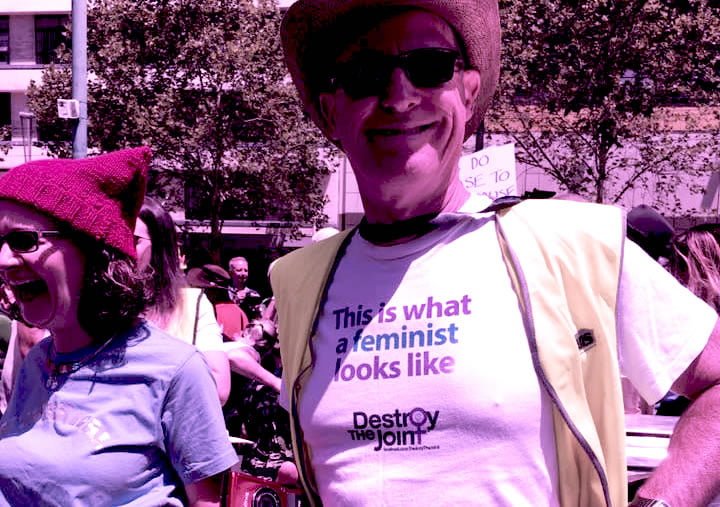
OurWatch Equality and Respect Standards
Our leaders consistently demonstrate a commitment to promoting gender equality and preventing violence against women by:
- Promoting gender equality in our strategies, policies and procedures; and
- Having dedicated resources and budget to actively address gender inequality and the drivers of violence against women within our workplace; and
- Holding staff accountable for consistently promoting gender equality in all communications, organisational plans and activities.
We have structural support for women’s leadership, including the provision of leadership opportunities for part‐time staff; and male and female leaders model the use of flexible work options by:
- Implementing deliberate strategies to recruit, train, mentor and retain women in leadership roles; and
- Making efforts to reduce the gender pay gap and give all staff access to flexible work options and parental leave; and
- Creating a workplace culture and communication style that promotes and supports flexible work and parental leave for both men and women; and
Having transparent practices to help uphold commitments to gender equality in recruitment, professional development and career.
Our leaders challenge gender stereotypes, discrimination and attitudes that support male superiority, and think critically about styles of leadership that are valued in the workplace, by:
- Leadership consistently models respectful and equal relationships between men and women; and
- Our policies and procedures (i.e. code of conduct, induction, occupational health and safety, equal opportunity etc.) include proactive measures to address gender inequality; and
- Staff across our workplace understand the importance of promoting gender equality and know they will be supported to challenge sexism and raise issues relating to gender and discrimination; and
- We actively avoid perpetuating gender stereotypes in our communications across the workplace; and strategies have been implemented to minimise backlash or resistance and grow support for change.
Our leaders consistently reject any form of violence or harassment, whether occurring within or outside of the workplace, by:
- Having clear policies and procedures to provide appropriate support for staff who experience violence; and by making sure employees don’t use workplace resources to commit any act of violence; and
- We have the partnerships, systems and trained staff to respond promptly and appropriately to complaints and claims about violence and sexual harassment.
Our leaders effectively use our work and public profile to demonstrate support for gender equality and the prevention of violence against women, by:
- Integrating key actions to promote gender equality into our core business and our engagement with the community reflects our commitment to gender equality and preventing violence against women; and
- Our stakeholder engagement activities, public statements and external communications reflect our commitment to promoting gender equality, rejecting sexism and challenging attitudes that justify, minimise, trivialise or excuse violence against women.
Key Tools to Assist
Workplaces
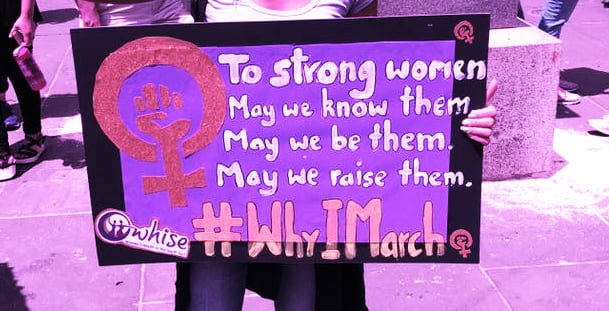
Checkpoint:
Stage 3
What needs to occur before you move onto the next stage?
Our workplace has completed the following:
1. We have implemented structures within our workplace, which are reflective of gender equity and support the prevention of violence against women
How have we done this?
We have developed our long-term strategy on gender equity and the prevention of violence against women; and
We have implemented our short term action plan, completed one action plan, and evaluated that plan; and
Our human resources department or leadership team have implemented policies, which are supportive of gender equity and the prevention of violence against women.
2. We have increased staff and leadership capacity to lead gender equity and prevention of violence against women initiatives
How have we done this?
We have provided staff and leadership with advanced training in bystander action and in handling pushback; and
Our workplace has an official ‘zero tolerance’ policy for sexism or gender discrimination which is supported and monitored by staff and leadership; and
We have members of staff and members of the leadership team stepping into ‘champion’ roles, to spearhead gender equity and prevention of violence against women initiatives or fundraising activities.
Our Watch; Workplace Equality Respect Standards have heavily informed our check points, for practical advice on the tools to adopt to measure these milestones, please access the WER standards.
